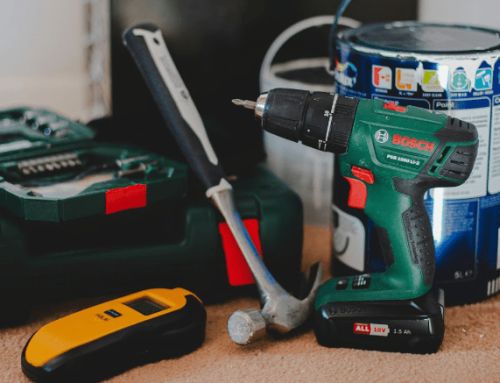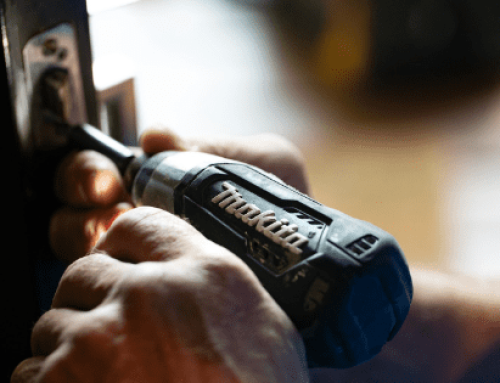The tragic Grenfell Tower fire highlighted the utter importance of adequately assessing and repairing external wall systems. It is now more important than ever for property owners and managers to be fully aware of their building’s EWS and to ensure that any necessary repairs are carried out as soon as possible. To do this, you will need to complete an EWS1 form.
Our guide is here to walk you through exactly what the new EWS1 form is, why it is important and how to complete it. Let’s get started.
What is an External Wall System?
An External Wall System (EWS) is a type of cladding system that is used to clad the exterior walls of a building. EWS systems are made up of a series of panels that are installed on the exterior of the building, typically using metal brackets or studs.
External Wall Systems are often used to improve the appearance of a building, as well as to improve its thermal performance. They can be made from a variety of materials, including metal, plastic, and timber, meaning that some forms of EWS are more combustible than others.
Cladding is one of the most commonly used components of an External Wall System. Cladding is a material that is used to cover the external walls of a building. It is typically made from aluminium, steel, or composite materials, and is available in a range of colours and finishes.
One of the key problems with cladding is that it can be very combustible, and in some cases can contribute to a fire spreading up the external walls of a building at high speed. As such, it is important for property owners and managers to ensure that any cladding on their building is made from a non-combustible material and that all combustible materials are highlighted on an EWS1 form.
What is Facade Cladding?
Facade cladding refers to materials that are used to cover the external walls of a building with the purpose of improving the appearance of a building, as well as improving its thermal performance. If these materials, however, are combustible, they can pose a fire risk as outlined above, and therefore must be highlighted on an EWS1 form.
What is the EWS1 Form?
The new EWS1 form was introduced by the Royal Institution for Chartered Surveyors (RICS) in December 2019 in response to the Grenfell Tower tragedy as a way of ensuring that all UK buildings are safe from fire hazards. The form is a questionnaire that property owners and managers can use to assess the condition of their building’s External Wall System, and allows for an owner or manager to benchmark their building with regulations and safety standards.
The form is designed to help identify any potential risks associated with an EWS, including:
- Fire
- Water ingress
- Weather damage
- Vibration
- Defects in the cladding system
These risks can be potentially life-threatening, and it is therefore essential that they are identified and addressed as soon as possible by those in positions of responsibility. As such, the new EWS1 form is not mandatory, but it is strongly recommended that property owners and managers use it to assess the condition of their EWS and protect the safety of their occupants.
Who is it for?
The new EWS1 form is for use by anyone who owns or manages a building with an external wall system. This could include property owners, property managers, architects or building surveyors.
The form is also vital for insurers and lenders when it comes to making crucial decisions, and for Fire Risk Assessments that will allow the fire service to develop their own emergency strategy for the building or block.
It is the responsibility of the owner or manager of a building with an External Wall System to ensure that the form is completed and that any necessary repairs are carried out. There is no specific deadline for completing the EWS1 form, but it should be completed sooner rather than later.
You Might Like: The Roles of Freeholders, RMCs and Managing Agents in Block Management
Does Your Building Need One?
Your building may meet the requirements for an EWS1 form if it has an external wall system that is made up of cladding panels, window frames, doors, or metal brackets and studs.
However, not every block will require an EWS1 form. On 5 April 2021, the UK government issued new rules that will be used to help assess whether a certain structure requires an EWS1 form. This guidance states that an EWS1 survey is only required if:
- There are over 6 storeys with cladding, vertically stacked balconies, or curtain wall glazing.
- There are 5 or 6 storeys with a significant amount of cladding (25% plus of the whole of one elevation); ACM, MCM, or HPL panels; or vertically stacked balconies.
- The building has 4 storeys (or fewer) with ACM, MCM, or HPL panels.
- Your building is over 18m (6 storeys) or is high risk and requires specialist testing. (It will still require a qualified fire safety engineer to undertake an EWS1).
If you are unsure whether your building needs an EWS1 form, you can contact your local RICS surveyor for advice, or get in touch with a property management company that can refer you quickly and efficiently.
What if My Building Doesn’t Require an EWS1 Form?
Even if your building doesn’t require an EWS1 form, it is still important to ensure that it meets all fire safety regulations. The government has issued new guidance to help identify whether a structure requires an EWS1 form, and you can also contact your local RICS surveyor for advice.
In addition, it is a legal requirement under the Regulatory Reform Order, also known as the Fire Safety Order (FSO), to have a fire safety plan in place for your building. This should include regular fire drills and ensuring that all occupants are aware of the evacuation procedures.
According to Article 3 of the FSO, the “Responsible Person” for ensuring the Fire Safety Plan of a premises is the person who holds control over the premises. This may include building owners, leaseholders or property managers.
Reviewing the EWS1 Process
Benefits of the New EWS1 Form
Grenfell highlighted the clear need for new systems and processes in the UK property market. The implementation of this form allows for an owner or manager to benchmark their building with regulations and safety measures. The questions in the form will help identify any potential fire hazards and provide a pathway for repair, which is vital to keeping occupants safe.
There are many benefits of using the EWS1 form, including:
- The form protects the safety of occupants by providing a means of identifying and addressing any potential risks.
- The form is free to use.
- It can be used for both commercial and residential buildings.
- It provides a clear pathway for identifying and repairing any potential fire hazards.
The form was introduced based on a necessity for more safety in the property market, meaning there are clearly defined reasons to utilise it. These benefits protect both your occupants and your business from the potential damages of a fire.
Problems With the New EWS1 Form
Unfortunately, the new EWS1 form can sometimes create more problems than it solves. The biggest problem that the UK faces with the EWS form is that it requires a registered fire engineer from the Institute of Fire Engineers (IFE) to sign off on, of which there is a significant shortage in the UK. In fact, in 2020 there were fewer than 300 registered fire engineers in the IFE directory available to issue EWS1 ratings and assess and confirm if remediation is needed.
This means that obtaining an EWS form can be a lengthy and time-consuming process. This has led to a number of buildings being unable to sell or let until the EWS1 form has been obtained and signed off by a fire engineer, even if the building is deemed safe by other means.
Despite these potential issues, it is still important to use the form if your building meets the requirements. The benefits of using the form far outweigh the practical problems and it is vital that you take all steps possible to protect your occupants from a fire.
It is also important to note that the EWS1 form should not be used as the only means of assessing fire risk. The form should be completed in conjunction with other assessments, such as a Fire Risk Assessment.
Related Reading: 8 Ways To Make Your Residential Block More Sustainable
Obtaining Your EWS1 Form
Working With a Property Manager
If you are the owner or manager of a building with an External Wall System, it is your responsibility to ensure that the form is completed and that any necessary repairs are carried out. You can either complete the form yourself or work with a property manager to do so.
If you choose to work with a property manager, they will likely have their own copy of the form and will be responsible for completing it on your behalf. It can be extremely useful to have a property manager who is familiar with the EWS1 form and can help you to assess and address any potential risks associated with your building’s EWS.
Completing Your Form
Once you have received your form, you will need to complete it. Here’s a quick guide.
The EWS1 form is made up of three sections:
- Section A: Details of the property and its EWS
- Section B: Assessing the condition of the EWS
- Section C: Action planning for addressing any risks identified
In section A, you will need to provide details about your property and its External Wall System. This includes information such as the name of the building, its address, the type of EWS it has, and when it was installed.
In section B, you will need to assess the condition of your External Wall System. This includes answering questions about whether the EWS is compliant with regulations and safety standards, whether it has been subject to any fire or water damage, and whether there are any defects in the cladding system.
In section C, you will need to create an action plan for addressing any risks identified in section B. This includes setting out a timeline for completing any necessary repairs and detailing the costs associated with them. You will also need to provide contact details for yourself and anyone else involved in completing or submitting the form.
Once you have completed the EWS1 form, you will need to submit it to your local fire authority. The fire authority will then review the form and may ask for additional information or clarification. They may also visit your property to carry out their own assessment. A good property manager can also help you with this process.
Stuck? We Can Help
If you’ve been affected by the problems outlined above, and your property sale or purchase is being delayed by the need for an EWS1 form, don’t worry – you’re not alone.
Our team of expert block property managers are here to help. We can work with you to complete the EWS1 form and address any potential risks associated with your building’s EWS. Contact us today to find out more.










Leave A Comment
You must be logged in to post a comment.